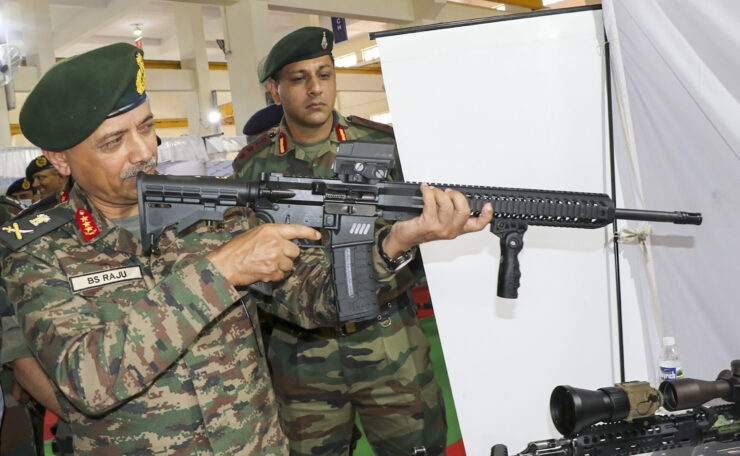
New Delhi: In a clear message, Vice Chief of Army Staff, Lt Gen B.S. Raju said that henceforth almost all Acceptance of Necessity (AoN) issued by the of new systems and equipment would be issued only to indigenous defence manufacturers.
“We will not ask you the moon,” Vice Chief of the Army Staff Lt Gen B.S. Raju told industry on Saturday but clearly the message was that future wars would be fought with indigenous equipment.
Most of the AoNs would be given to Indian industry, at least 90% and above, he stated. They were also working on simplifying the service requirements issued for equipment so that industry could meet the specifications. This is in line with the recent amendment that Services have to make all procurements from domestic industry and go for direct imports only as an exception.
“We will not ask you the moon. The Preliminary Service Quality Requirements (PSQR) that we are going to give are going to be reasonable so that you are able to produce. If your equipment can meet 80% of our aspirations, then we will go ahead and issue orders…”, he told the exhibition at the North Tech Symposium organised by the Army’s Northern Command in Udhampur, where over 160 Indian companies showcased their products.
On the procurement process and the Defence Acquisition Procedure (DAP) 2020, he said there was need to further simplify the procedures so that they were more agile and flexible to meet the aspirations of the troops, industry and the users.
In the last two years, he noted, the Army had entered into contracts worth Rs 40,000 crore with the Indian industry. Hereafter, the AoNs would be given only to indigenous defence manufacturers. “We will come more than half a distance to meet your aspirations. We will give you all the facilities that are required, whether it is equipment, testing facilities and most importantly our time.”
On the immediate requirements the Northern Command is looking for, its Commander, Lt Gen Upendra Dwivedi, said the two major criteria were what was being imported from outside and where the enemy had a technology that needed to be countered.
A key result area was Extreme Cold Climate (ECC) clothing and Special Clothing and Mountaineering Equipment (SCME) for high-altitude and super high-altitude glacier. Secondly, surveillance and counter-surveillance like drones and counter-drones, where the technologies were evolving every day.
“Whatever we are doing, the adversary is able to find a counter to it and we have to again look for a counter,” Lt Gen Dwivedi noted. These technologies were being developed across the world and by the time they came here, they were very late, and even obsolete. “Therefore, it is imperative for us to develop these technologies in India, so that we are also able to evolve and graduate to a higher level, in conjunction with what the adversaries are doing, or even better than that,” he asserted.
In the last two years, the Army has signed a series of contracts with Indian start-ups for small drones for surveillance and load carrying.
Abhimanyu Arora, Executive Assistant (Tech) to CEO of Noida-based start-up Raphe mPhibr Pvt. Ltd. which showcased its products at the exhibition, said they got two separate orders from the Army, 48 mR-20 logistics drones which could have a cargo of up to 20 kg in high-altitude areas for the infantry and 100 hexacopter drones for the Armoured Corps.
AROO, an Indian apparel company, recently said it had developed Extreme Cold Weather Clothing System (ECWCS) and other specialised defence clothing and had so far fulfilled the supply of over 60,000 ECWCS sets.
A recent statement from the company said that its first product was ECWCS where they passed field trials in 2017 and were currently manufacturing this product in India through its original equipment manufacturer based out of Bangalore. ECWCS is a three-layer modular clothing system worn together, which is designed to operate in temperatures of up to -50 degrees Celsius and is being used by the Army at high-altitude regions, including the Siachen Glacier.









